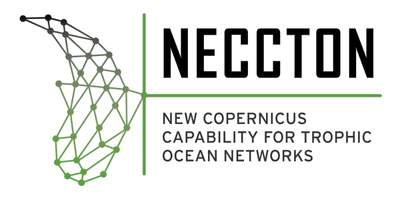NECCTON will enable the Copernicus Marine Service to better inform ocean policymakers, managers and publics about biodiversity conservation and fisheries management, by means of new modelling products for the green ocean: fishes, pollution and benthic habitats.
NECCTON will enable CMEMS to provide twenty-five new or improved products as shown below:

Central Hypothesis
The NECCTON vision is of a fully integrated modelling system that closely represents the functioning of the real marine ecosystem. To achieve this, we will build and integrate new and innovative models that can simulate marine high trophic levels, the benthic environment, the fate of pollutants and the impact of climate scenarios on ocean ecosystems.
The products from this system can be used for many applications including fostering ocean biodiversity conservation, supporting food security, and informing European policies.
We will achieve this through implementation of our central hypothesis:
" credible products and scenarios of food resources and biodiversity need systems that fuse observations into integrated models of the physics, biochemistry, fauna and flora components of ocean ecosystems, across benthic and pelagic habitats, and across multiple pressures including climate, fisheries and pollution".

NECCTON will feed into the Copernicus Marine Service which will enable a much wider range of uses and applications. The diagram below shows the Copernicus Marine Service before and after the addition of the NECCTON products. Before NECCTON the Copernicus Marine Service could only forecast and examine ocean physics and aspects of biogeochemistry.
Addition of the NECCTON products will mean that the Copernicus Marine Service is able to offer:
- Improved biogeochemical products
- Modelling of higher trophic levels
- Modelling of the benthic habitat
- Modelling of marine pollution
This will lead to new capabilities including:
- MPA management
- Biodiversity conservation
- SDG reporting
- Fish stock management
- Support for aquaculture operations




